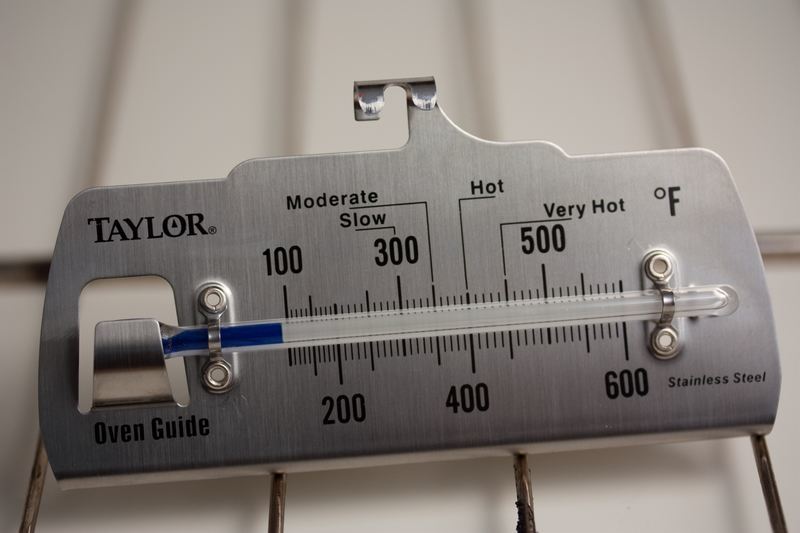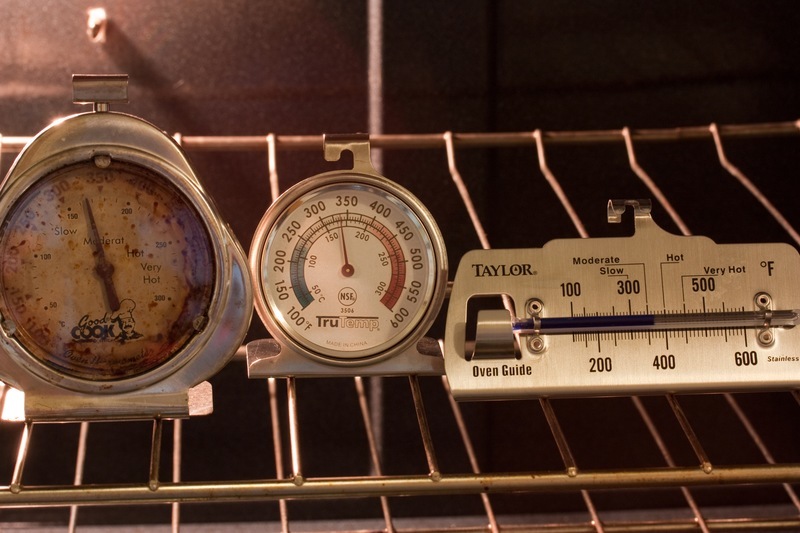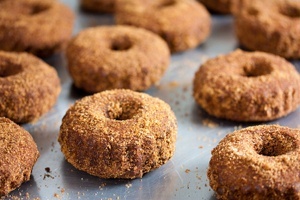How to Choose an Oven Thermometer
0
Comments (4)

I've always recommended to have at least one thermometer in the oven at all times. Do you really want to trust that other shady built-in oven thermometer? Last I saw that dude he was blinking 12:00 like it was actually that time (maybe it was). The fact is, your built-in oven thermometer is usually off and it's a good idea to take steps to correct oven temperatures before you wake up and realize that you've grown into an adult at the same house accompanied by almost 1,053 slightly burned Friday night pizzas.
Lately I've kept a couple oven thermometers in the oven just to be extra paranoid. That is, until I questioned which thermometer was actually the correct one. Mass hysteria ensued and some people in my kitchen re-enacted the crash scene from the movie Airplane. You can always boil water and drop your thermometer in and see if it reads boiling temperature which is 212F. The last time I did that the thermometer read above 212F but was normally registering as too cool in the oven for some strange reason.

The thermometer on the left is the oldest and the least accurate, indicating about 25 degrees off. It got me through my years running Enchanted Oven Baking Co so I owe it some respect. The thermometer in the middle, has seen a few years of use as the starring role in assisting the development most of the recipes on Veganbaking.net. It's showing about 10 degrees below 350F. The thermometer on the right is the new acquisition that should theoretically be accurate until the black temperature indicators become illegible after repeated cleanings.
Regular thermometers work by having two different types of metal sandwiched together as a long strip, then formed into a coil. The heat causes one side of the strip to expand more than the other and spin a dial, indicating the temperature. This is slightly more sophisticated than cave man's method for temperature in which hot was probably "oww" and burning was likely "AAHHH". The more metal expands and contracts with heat the weaker and less reliable it becomes.
Enter the analog thermometer. Although it no longer uses mercury inside of it's glass tube, the Taylor 5921N Commercial Grade Oven Thermometer caught my eye and I had to check it out. It's just a glass tube mounted on a piece of stainless steel. It has the advantage of having no coils to wear out although it's a little harder to read. According to some reports, the black temperature indicators can get washed off after repeated cleaning attempts. I'd rather have an accurate thermometer that's hard to read than actually thinking my oven is 25 degrees colder than it really is. I'm confident that this thermometer will be more reliable and result in more consistent oven temperature readings over time.






